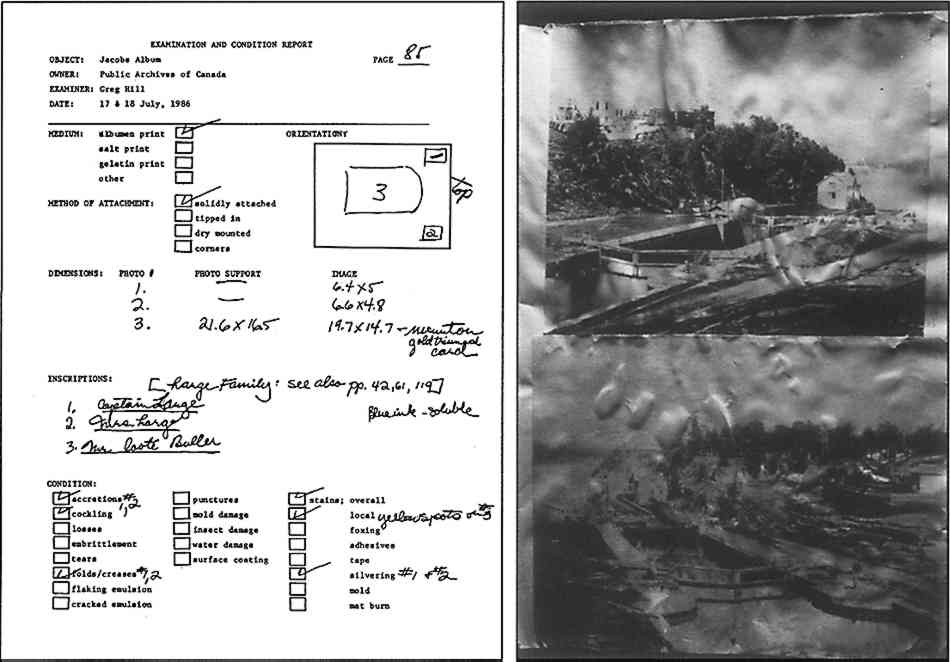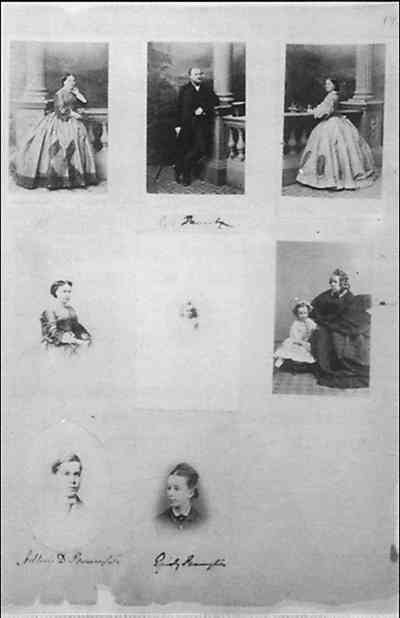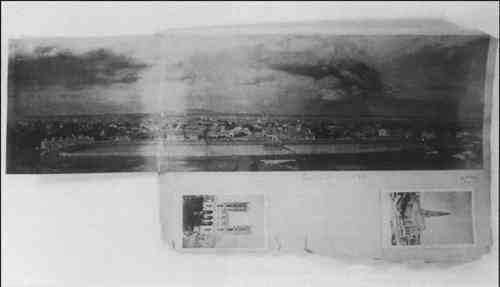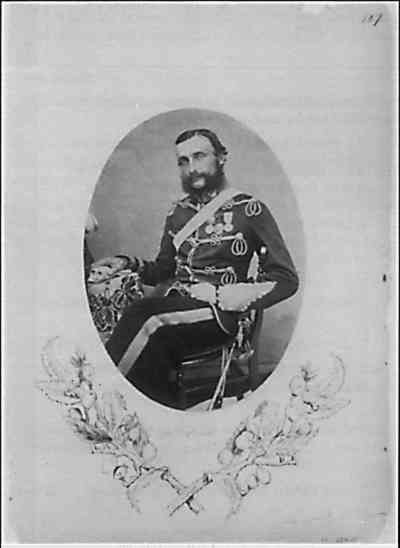THE CONSERVATION OF A PHOTOGRAPH ALBUM AT THE NATIONAL ARCHIVES OF CANADA
GREGORY HILL
3 EXAMINATION/CONDITION REPORT
A CONTRACT was awarded to the author to conduct an examination of the album. The resulting report contained a complete examination/condition report and several treatment options with cost estimates, indicating the preferred treatment option. To prepare the report, the author developed an examination form that was completed for each page of the album, noting page number; the number, orientation, and dimensions of photographs on the page; inscriptions; methods of attachment; and general condition (fig. 1). This form proved to be an efficient means of assembling the required information for the report and was extremely helpful in maintaining order during actual treatment of the album.
Fig. 1.
(Top left) Completed examination report form filled out for each page of the album
 |
The Jacobs Album consisted of three volumes, which appear to be account books dating from the mid to late 19th century. The acidic groundwood paper was of poor quality and generally incompatible with the photographs mounted on it (figs. 2a–b). Several years prior to treatment, the pages were cut from their original bindings, placed in cellulose triacetate sleeves, and housed in Solander boxes. Two of the three album jackets survived and were stored separately. The album was received in this state for examination.
Fig. 2a–b.
(Right top and bottom) Pages from the album prior to treatment. 2a is shown in raking light
 |
In brief, the following observations were made:
- The album contained 332 pages (166 leaves). Thirty-eight of the album leaves had photographs adhered to both sides.
- Of the 913 photographs in the album, one was a salt print and the rest were albumen prints. Many were mounted cartes de visite. All were solidly mounted to the pages with either starch paste or hide glue.
- Many of the photographs mounted flush with the edge of the page had suffered considerable physical damage due to rough handling. Photographs that lay parallel and in close proximity to the page edge had faded and stained along the edges, indicating the migration of airborne, oxidizing agents into the album from all four sides (fig. 3).
- Some of the photographs exhibited distortion caused by cockling of the album pages.
- A number of photographs contained hand coloring in water-soluble pigments.
- The original pages were medium-weight off-white wove paper. The pages were discolored, embrittled, and exhibited various degrees of physical damage. All pages were cockled.
- Eight pages contained floral motifs painted directly onto the album page bordering the photographs. In most cases, the motifs were executed in black ink, but two include watercolor (fig. 4).
- Most of the pages contained handwritten ink inscriptions, many of which were water soluble.
Fig. 3.
(Above) Mechanical and chemical damage sustained by a print along its edges (unfolded panorama)
 |
Fig. 4.
(Right) Floral motif on album page bordering the photograph
 |
|



